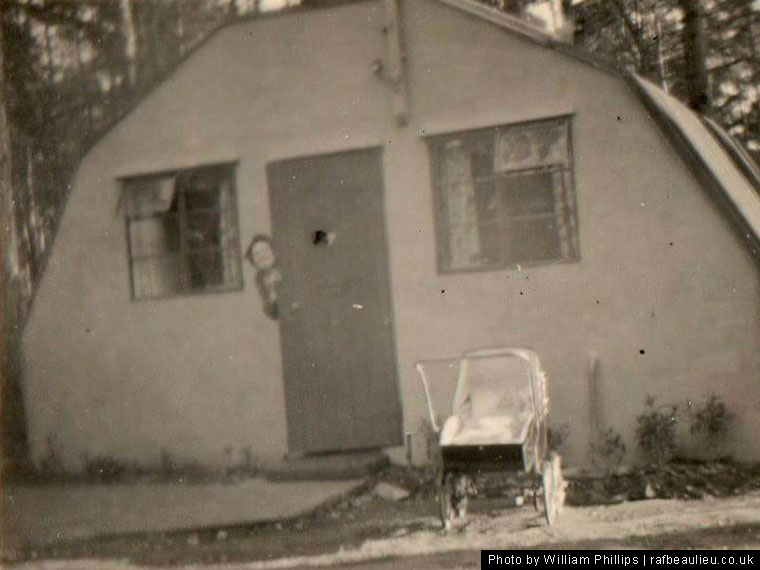After the Second World War, some military accommodation left over on the New Forest airfields was turned over to the council to help with a housing shortage.
Not only had bombing destroyed thousands of homes, but there was also a post-war baby boom, lack of materials and funding for new builds, plus men returning from the war with no homes to come back to.
RAF Beaulieu was no different. There were Nissen Huts and Handcraft Huts available for young families, many of whom were those of servicemen returning from the war.
One such family was that of William Phillips and his wife Mary.
In 1948 they moved into a hut on RAF Beaulieu’s Site 6, paying 8 shillings a week in rent. Their accommodation was located to the northern side of what today is known as Roundhill Campsite.
In 1949, William and Mary, plus their two young children were moved from Beaulieu Airfield to Setley to live on the ex-POW camp. The council had taken over the camp and converted the huts for civilian use, putting in baths and toilets.
In 2021, William was kind enough to share his personal memories of life living as a young family in the huts at RAF Beaulieu.

Here is a small selection of his memories.
“There were quite a few families living in the site. All young, mainly ex-service people. I did not hear anyone complaining of the hardship of living in a hut. They were probably thinking how lucky they were in surviving the war.”
“Our hut was on the edge of the site. The accommodation in the huts were two bedrooms and a living room combined with the kitchen. It was really hard going in those days. No fridge, no washing machine, only a coal range for cooking. Our toilet was in a block, and I didn’t like that arrangement too much.”
“The only heating was an old fashioned coal range, not an ideal situation but we were happy to be together after getting de-mobbed from the army.”
“The floor was concrete and did not have any covering. We managed to buy some roofing felt which we used as lino and then painted it with some special floor paint. It did the job and was better than nothing.”
Read the full account
You can read the full account of William and Mary’s time living on the RAF Beaulieu Airfield on the following link:
The above link is part of an independent on-going project to document RAF Beaulieu’s history. The findings will also be placed onto the New Forest Knowledge portal, but most of the time will appear first and with more detail on the independent RAF Beaulieu History Project website.

